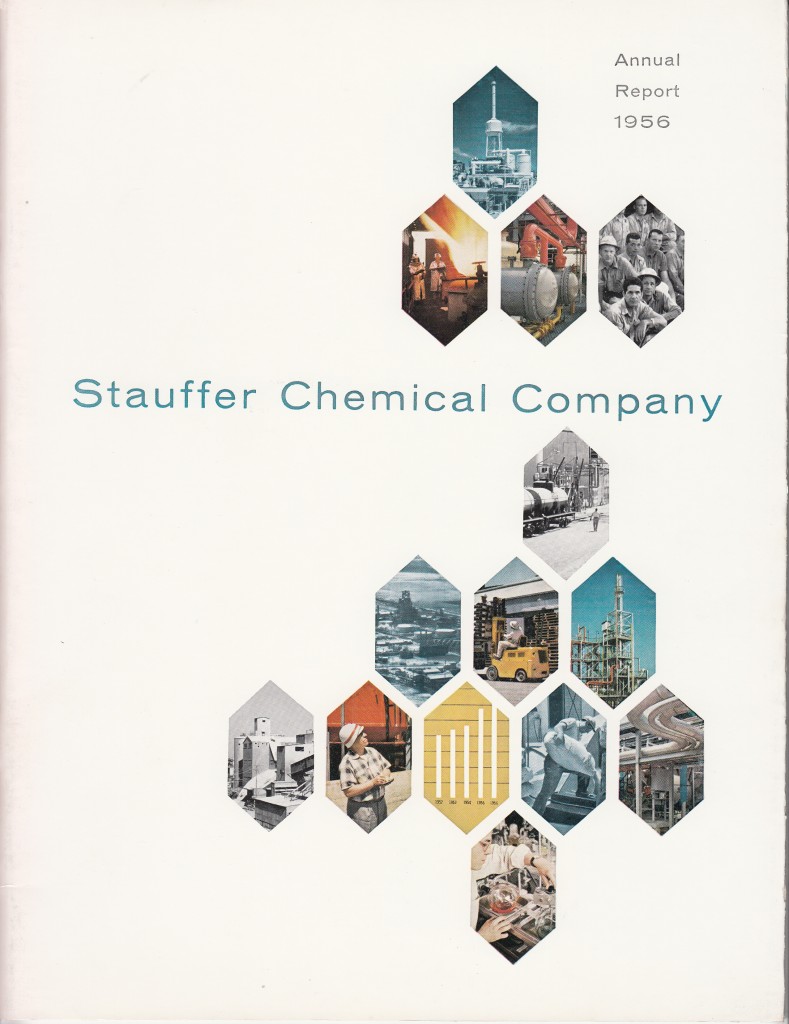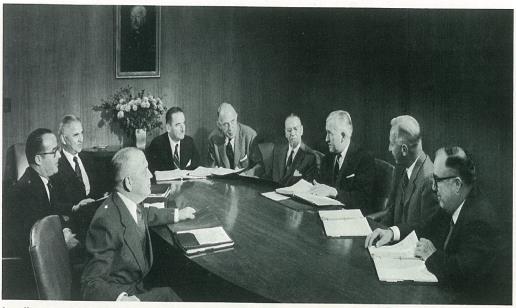
When John Stauffer arrived in San Francisco in 1881, the city was a magnet for talented and ambitious young men. The discovery of gold in the mountains west of the Continental Divide and the influx of the 49ers had transformed San Francisco from a sleepy village to a city of fabled opportunity. Stauffer came to sell heavy chemicals for a Belgian company. For the City’s manufacturers, and the farmers and grape growers on its outskirts, rail and sea freights made chemicals imported from the East coast or Europe prohibitively expensive. Stauffer had noted, soon after he arrived, that grain ships taking western wheat to England, usually returned in ballast, loaded down with white cliffstone from the chalk cliffs of Dover. When the ships took on new cargo, the cliffstone was simply dumped overboard. If he could find a way to grind the cliffstone – much in demand locally for whitewash and other uses-he could sell it for half the imported price.[i]
It didn’t take long for him to go into business for himself. With the help of a countryman, Joseph Mayer of Hamburg, who owned a plot of land at North beach in San Francisco, the financial assistance of an elegant young French banker – Christian de Guigne I, and two shiploads of Dover cliffstone, he began the entrepreneurial journey that would become Stauffer Chemical Company.[ii]
With his plant in North Beach, the enterprising Stauffer looked around for more opportunities. He made friends in the local chemical industry, One of these friends was the earnest young chemist John H. Wheeler, who by then was producing carbon bisulfide, along with other agricultural chemicals. Stauffer and Wheeler decided to merge their interest. Stauffer again turned to banker de Guigne for advice and financial assistance. Not only did de Guigne encourage the merger, he decided to become part of the company. Although the shirt-sleeved, working chemists and the independently wealthy, French-born banker had very different life styles, they held identical views on thrift, integrity and the value of hard work.[iii] These values became the foundation of the company they would build. They were expressed in letters John H. Wheeler wrote to his daughter, Cornelia Wheeler Good and son-in-law Stanley Wells Good. in 1921. In those letters, John Wheeler expresses his hope that the first stock gift he gave them would be wisely managed. He planned well for his family heirs, continuing to gift them stock that would benefit generations.
In 1895, Stauffer Chemical Company was incorporated under California law, with a capitalization of $300,000. De Guigne became president, Wheeler, vice president and Stauffer, secretary. These three men ran the company for the next 37 years in great harmony and outstanding success. Ownership was retained by the families of the three founders until the company went public in 1953. Christian de Guigne gave the first chairman’s address to public shareholders.[iv]
Stauffer enjoyed growth through the 1970’s, exceeding sales of $1 Billion in 1976. Consistent with its beginnings, Stauffer’s major and most profitable business was in agricultural chemicals, although it had heavy chemical and specialty chemical divisions. The agricultural products division, along with its proprietary products and R&D, became a target of corporate raids, and in 1984, Carl Icahn made a hostile acquisition move to take over Stauffer. Meanwhile, Morley had been in discussions with the Chesebrough-Ponds Company, also a takeover target, to combine the two companies should a hostile bid be made for either company. In essence, Chesebrough-Ponds became a “White Knight” for Stauffer. White knights are preferred by the board of directors (when directors are acting in good faith with regards to the interest of the corporation and its shareholders) and/or management as in most cases as they do not replace the current board or management with a new board, whereas, in most cases, a black knight will seek to replace the current board of directors and/or management with its new board reflective of its net interest in the corporation’s equity. Icahn backed off but a new black knight, BASF of Germany, came forward. Chesebrough-Ponds acquired Stauffer in 1985 but then it, too, was acquired by Unilever in 1986.
Mr. Morley shared much of the Stauffer story with David E. Good, John Wheeler’s great grandson, while at the Summer Encampment at the Bohemian Grove in 2015. Morley is a member of Sunshiners Camp, which at one time had many Stauffer Chemical Company executives as members, including John and Rollo Wheeler.
Howard Good, John Wheeler’s grandson, held onto one share of Stauffer stock. He and many other family members were beneficiaries of a man who dared experiment in a small plant in Berkeley over a century ago, and left a lasting legacy of hard work, vision and character for those who followed him.
[i] Ibid pg. 4
[ii] Ibid pg 4
[iii] Ibid pg 4
[iv] Document 56 Christian de Guigne’s first report to the shareholders as a publicly held company in San Francisco – September 2nd 1953 and in New York – September 10th 1953.
[v] Document 65 Durrant, William P. (1977). Chemical Company Report “Thanks A Billion!” Stauffer News, Westport, CT. pg.14


